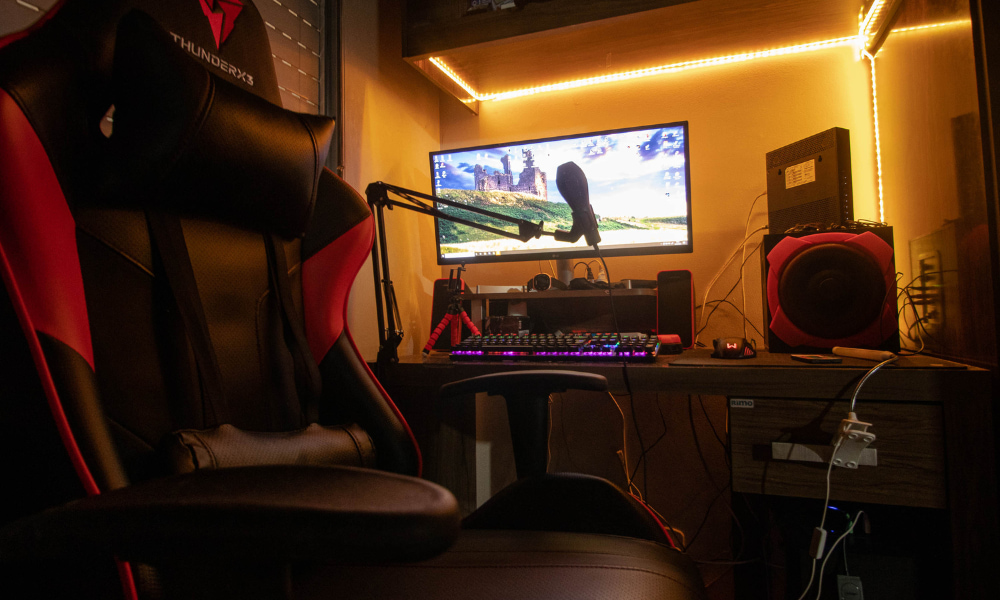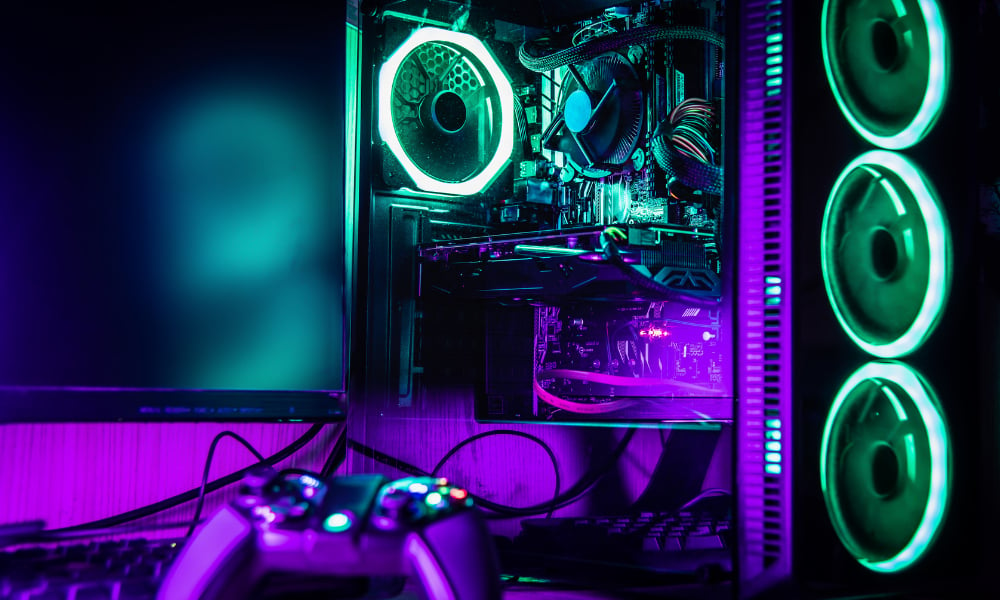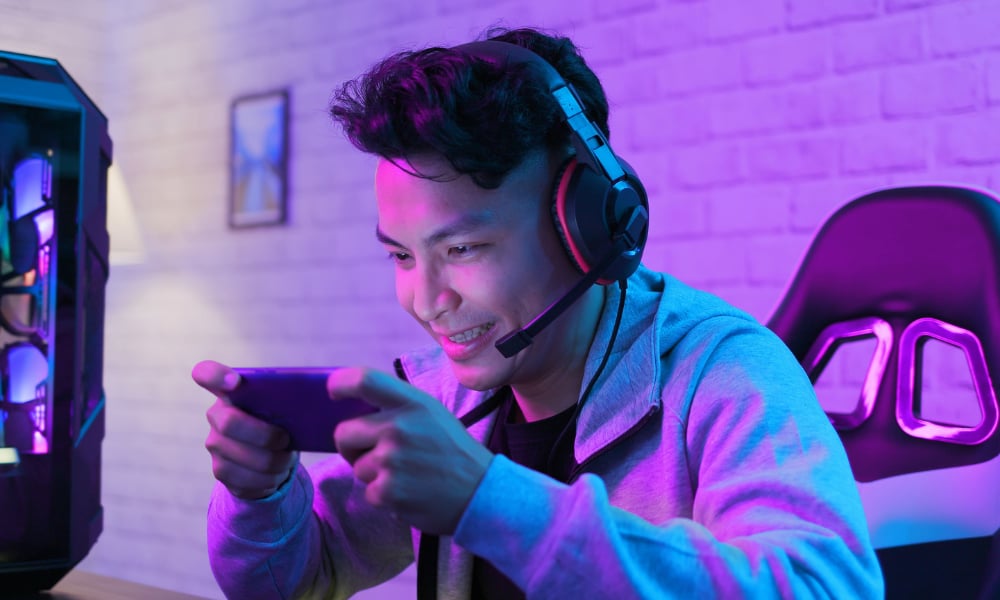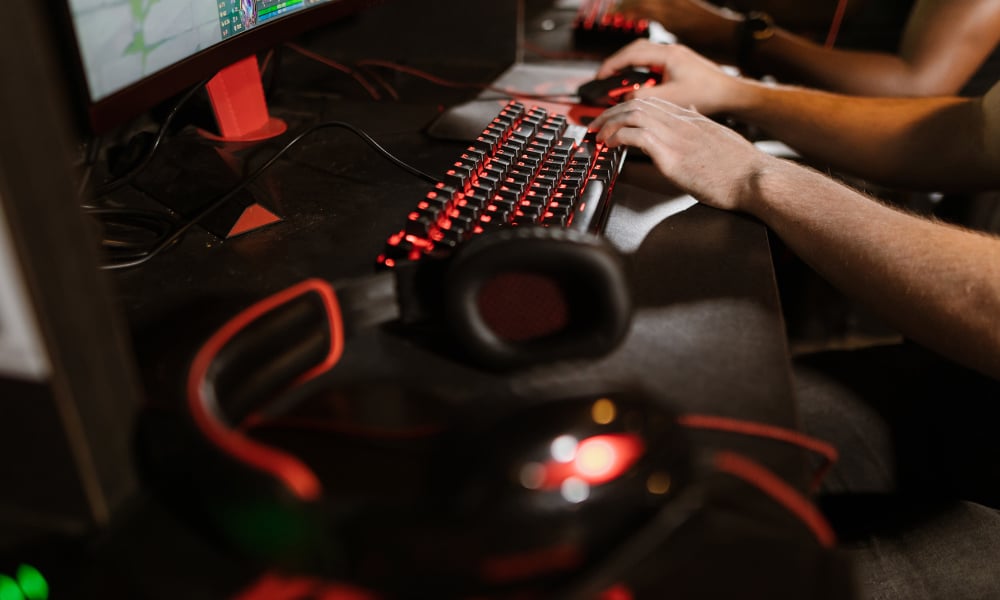Deportes electrónicos
El papel de los streamers en la popularización de los eSports en todo el mundo
Los streamers de deportes electrónicos impulsan el entusiasmo mundial por los deportes electrónicos y los juegos móviles al ofrecer educación en tiempo real, desarrollar comunidades y ayudar a los jugadores a convertir el juego casual en competencia.
Anuncios

Ver transmisiones de juegos en vivo puede ser como pasar el rato con amigos que comparten tu pasión por los juegos móviles. Muchos se han preguntado por qué los streamers de esports marcan tendencia y generan una base de fans entusiastas en todas las regiones.
Los eventos globales de videojuegos ganan popularidad a medida que más personas sintonizan transmisiones interactivas. El auge de los streamers de esports cambia la forma en que los aficionados descubren juegos, conocen nuevas comunidades y se unen a la escena competitiva, tanto en dispositivos móviles como en PC.
Sumérgete para ver exactamente cómo los streamers de deportes electrónicos impulsan el interés mundial en los deportes electrónicos, las herramientas y los métodos que utilizan, y las formas paso a paso en que los espectadores se convierten en participantes activos.
Cada espectador obtiene puntos de entrada a través de presentaciones de juegos dirigidas por streamers
Los streamers de esports ofrecen a los fans una visión única tras bambalinas de los títulos móviles más populares y los torneos. Los recién llegados ven a sus personajes favoritos para aprender a jugar y luego prueban los consejos en sus dispositivos al instante.
Estas transmisiones difuminan la línea entre jugador y espectador. Muchos jugadores ocasionales sienten la ambición de unirse a torneos de esports tras ver consejos accesibles y comentarios sinceros de los streamers.
Mecánica del juego con comentarios paso a paso para streamers
Los mejores streamers de esports desglosan partidas complejas en pasos fáciles de digerir: jugada inicial, juego de poder y configuraciones defensivas. Al narrar sus acciones, ofrecen una guía estratégica dinámica y demuestran que cualquiera puede mejorar con la retroalimentación.
Por ejemplo, un streamer podría decir: "Así es como se atrae el poder del oponente y luego se retira a una zona segura mientras se recarga". Los espectadores recuerdan estos escenarios concretos y los adaptan en el juego.
Este análisis regular del juego funciona como una sesión de clase. Los consejos de los streamers sustituyen los aburridos manuales de instrucciones y animan a los jugadores a imitar acciones, poniendo a prueba sus habilidades mientras disfrutan del espectáculo.
Las preguntas y respuestas impulsadas por la comunidad convierten las transmisiones en centros de desarrollo de habilidades
Las salas de chat de streamers se convierten en talleres de entrenamiento sobre la marcha. Los nuevos jugadores móviles preguntan: "¿Cómo puedo contrarrestar el especial de este héroe?", mientras que los streamers de esports responden con consejos rápidos y tácticos que pueden ponerse en práctica al instante.
Estos momentos de aprendizaje ayudan a los fans a superar obstáculos que, de otro modo, podrían impedirles unirse a la escena competitiva de los esports. La interactividad fomenta la participación regular y una red de juego de apoyo.
A medida que cada pregunta recibe atención durante la transmisión, más espectadores se sienten vistos y valorados. Esta vía de doble sentido hace que el aprendizaje sea atractivo. La audiencia se empodera y es más propensa a participar más allá de mirar.
| Función de transmisión | Beneficio para el espectador | Impacto de los deportes electrónicos | Paso de acción |
|---|---|---|---|
| Tutoriales en vivo | Aprendizaje en tiempo real | Accesible para principiantes | Probar movimientos durante las transmisiones |
| Análisis del partido | Perspectivas estratégicas | Agudiza las tácticas de los espectadores | Estrategias de notas en el juego |
| Preguntas y respuestas de la comunidad | Coaching instantáneo | Un compromiso más profundo | Haz preguntas sobre el juego |
| Aspectos destacados del evento | Mantente actualizado | Aumenta la expectación por los torneos | Compartir clips socialmente |
| Co-transmisión | Múltiples perspectivas | Exposición a nuevos juegos | Cambia de canal a menudo |
Los streamers traducen actualizaciones, parches de juegos y torneos para un público amplio.
Cada semana trae una nueva actualización o modo de juego. Los streamers de esports utilizan el traductor clave simplificando las notas del parche y explorando las funciones en vivo, lo que ayuda a los jugadores móviles a adaptarse rápidamente y a seguir el ritmo de los cambios en las metas.
Los streamers que prueban el nuevo evento o modo de torneo dirán: "Si consigues este drop, intenta impulsar a tu equipo por la entrada lateral". Las explicaciones directas permiten a los fans adaptarse en menos tiempo.
Crear resúmenes paso a paso de parches de juegos aumenta la confianza del jugador
Cuando se lanza una actualización del juego, los oyentes recurren a los streamers de esports para que les presenten guías estructuradas. Los espectadores siguen instrucciones como: "Reinicia tu equipamiento así, mantén estas habilidades y evita esta arma sobrepotenciada".
Esta guía les ahorra a los jugadores horas de prueba. Con guiones claros, el público se evita la frustración y comienza a competir a un nivel superior nada más verlo.
- Consulta las reacciones a las notas del parche para identificar qué nuevas características funcionan en enfrentamientos reales. Esto te ahorra tiempo en comparación con intentar adivinar qué ha cambiado.
- Adopte configuraciones probadas por streamers para obtener una ventaja inmediata, ya que la mayoría de los espectadores ven estas tácticas probadas en vivo.
- Pide comentarios en el momento sobre nuevos controles o armas, evitando horas de aprendizaje individual mediante prueba y error.
- Manténgase sincronizado con la comunidad global porque los streamers cubren las diferencias regionales en las actualizaciones del juego rápidamente.
- Realiza un seguimiento de las tablas de clasificación de streamers para comparar tu progreso con el de ellos y establecer objetivos realistas para mejorar.
Los oyentes desarrollan un plan de acción después de cada transmisión (registrar cambios, compartir consejos meta o formar equipos de práctica) que mejora su posición en los torneos.
La transmisión conjunta de torneos une culturas regionales en tiempo real
Cuando dos streamers de deportes electrónicos organizan conjuntamente un torneo móvil, superan las barreras lingüísticas e invitan a los fanáticos de todos los países a disfrutar del mismo partido, reaccionando a las jugadas juntos tanto en inglés como en dialectos locales.
Este enfoque presenta a los jugadores móviles estadounidenses formatos extranjeros, como los partidos de selección rápida coreanos, lo que aumenta la curiosidad sobre diferentes estilos de juego y tácticas.
- Mire transmisiones en dos idiomas para aprender nuevas frases y jergas del chat mundial de deportes electrónicos.
- Únase a eventos de chat donde los streamers traducen en tiempo real, lo que permite una participación fluida independientemente de la ubicación.
- Cambia de canal para seguir los momentos destacados de jugadores individuales de todo el mundo y llevar a casa ideas de estrategia global.
- Participa en batallas de fanáticos impulsadas por emojis para demostrar el espíritu de equipo durante las finales transmitidas conjuntamente.
- Escriba resúmenes posteriores a los partidos en foros para cristalizar nuevos conocimientos y comparar tácticas más allá de su región de origen.
La exposición a diversas estrategias a través de la transmisión no solo hace que los deportes electrónicos sean más inclusivos, sino que también inspira a los jugadores móviles a conectarse y colaborar en todo el mundo.
Las colaboraciones entre streamers impulsan el crecimiento viral de los juegos y su impulso social
Cuando dos o más streamers de esports juegan juntos, el impacto se multiplica. Sus bases de fans combinadas forman nuevas comunidades, presentando géneros, formatos y aplicaciones de juegos móviles inesperados a seguidores ansiosos por explorar.
Las sesiones de colaboración pueden funcionar como “microtorneos”, donde los espectadores miran bromas amistosas, aprenden reglas sociales no escritas y ponen a prueba sus propias ideas de trabajo en equipo en el próximo partido al que se unen.
Las transmisiones de "Probemos esta compilación" desencadenan desafíos comunitarios
Un streamer dice: "Usaré solo cuerpo a cuerpo en esta ronda, ¿puedes superar mi puntuación?". Los espectadores aceptan el desafío en vivo, luego compiten y comparan resultados en tiempo real a través de tablas de clasificación compartidas o capturas de pantalla publicadas en línea.
Esta competencia orgánica ofrece a los jugadores móviles objetivos de práctica instantáneos y alienta a grupos de amigos a unirse a torneos de deportes electrónicos para ganar apuestas reales después de ver cómo los desafíos impulsados por streamers se vuelven populares en línea.
Los desafíos suelen cambiar la forma en que las personas abordan su próximo partido. Los streamers animan a sus fans a salir de su zona de confort y a dominar nuevas tácticas de juego, haciendo que cada sesión sea productiva.
La mezcla de géneros con artistas invitados amplía el atractivo y el descubrimiento
Atraer nuevos jugadores a veces implica salir de la zona de confort. Los streamers de esports invitan a creadores de otros géneros, como juegos de estrategia o puzles, a cotransmitir desafíos especiales de crossover.
Esta combinación expone a los espectadores a nuevos juegos y mecánicas para móviles. Un fan que vea una transmisión de shooters podría probar torneos de puzles por primera vez después de un divertido episodio cruzado, ampliando así el abanico de esports de forma natural.
Cada combinación de géneros aumenta la audiencia de ambos juegos. Los espectadores notan los beneficios y se lo cuentan a sus amigos, lo que genera una reacción en cadena que fomenta un mayor descubrimiento y la expansión de la comunidad.
Los streamers impulsan la retención de jugadores mediante la creación de hábitos de participación rutinarios
Los fans se conectan a las transmisiones regulares, convirtiendo las transmisiones de esports en parte de su rutina diaria. Este hábito mantiene conectados a los jugadores ocasionales, mientras que los seguidores fieles crecen poco a poco, experimentando junto a sus streamers favoritos.
Los horarios de los espectáculos, los recordatorios de eventos y los temporizadores de cuenta regresiva refuerzan estos hábitos de juego positivos. Los jugadores regresan con regularidad, forjando vínculos que dan lugar a comunidades más grandes y competitivas dentro de los esports móviles.
Los recordatorios programados refuerzan la progresión constante de las habilidades
Los streamers de esports usan recordatorios como: "Empezamos a las 7 p. m. todas las noches, ¡da lo mejor de ti!". Esta constancia hace que los espectadores se sientan responsables. Planifican sus tardes para unirse y practican las habilidades que ya han visto en streams anteriores.
Los fans siguen su progreso cada semana, imitando las rutinas de los streamers. A medida que la mejora se hace visible, la motivación aumenta. Las sesiones de juego se convierten en práctica concentrada, consolidando los esports como una rutina gratificante tanto para principiantes como para veteranos.
Un programa disciplinado motiva a los miembros de la audiencia a tratar su crecimiento como un viaje de acondicionamiento físico, comparando resultados semana a semana y perfeccionando su enfoque a medida que acumulan habilidades.
Las herramientas de participación del espectador impulsan la participación activa
Las encuestas, los comandos para espectadores y las recompensas de minijuegos convierten a los espectadores pasivos en jugadores activos. Un streamer podría sugerir: "¡Escribe !join para unirte a mi equipo esta noche!". Esta simple acción reduce las barreras de entrada a los esports móviles.
La participación activa introduce estructura y responsabilidad social. Los jugadores adquieren un interés particular en su progreso, lo que fomenta la sensación de que cada sesión es un evento al que vale la pena asistir y contribuir.
Las herramientas para espectadores también gamifican la práctica (puntos por asistencia, insignias por logros compartidos), lo que infunde una inversión duradera y ofrece una prueba social del crecimiento personal en los juegos competitivos.
La educación interactiva de los streamers cierra la brecha del conocimiento rápidamente
Los streamers de esports funcionan como educadores en tiempo real, ofreciendo lecciones accesibles que evitan la jerga. Su estilo de "prueba conmigo" hace que los esports sean accesibles para jugadores móviles de todos los ámbitos.
La guía paso a paso, las reseñas en vivo y las preguntas y respuestas hacen que la curva de aprendizaje parezca menos pronunciada, especialmente para aquellos intimidados por la complejidad de los torneos de alto nivel o los paisajes de juegos competitivos.
Los tutoriales de “Mostrar y contar” simplifican el proceso de aprendizaje
Al narrar sus propias partidas, los streamers cambian la teoría abstracta por ejemplos reales. "Esta es exactamente la razón por la que me muevo a la izquierda antes de atacar: ese ángulo bloquea el daño sorpresa", explica un streamer, invitando a los espectadores a copiar la táctica en su teléfono.
Esta lente concreta acelera la comprensión. En lugar de detenerse a investigar, los espectadores prueban estrategias inmediatamente, lo que resulta en ciclos de aprendizaje rápidos y memorables que impulsan la preparación para los esports.
Los jugadores móviles atribuyen a estos tutoriales transmitidos por streaming el ahorro de tiempo y la reducción de las tasas de abandono prematuro, lo que impulsa el crecimiento de la participación competitiva incluso entre los jugadores primerizos.
Los desafíos de desarrollo de habilidades generan responsabilidad comunitaria
Durante los desafíos de equipo, los streamers asignan roles y monitorean el rendimiento: "Sam, flanquea por la derecha; Alex, defiende el punto". Los espectadores siguen su ejemplo, dividiendo las tareas del equipo y anunciando el progreso en el chat.
Los retos estructurados para streamers fomentan el crecimiento al combinar nuevas tácticas con motivación, retroalimentación rápida y objetivos realistas. Es mucho más fácil monitorear el progreso y mantener el compromiso cuando tanto el grupo de compañeros como el streamer te responsabilizan.
Las sesiones comunitarias de desarrollo de habilidades ofrecen a los nuevos jugadores la oportunidad de practicar en un ambiente de baja presión y con mucho apoyo. Esto facilita el salto de las transmisiones casuales a las competitivas de esports.
Los streamers marcan tendencias que transforman el ecosistema de los deportes electrónicos
Las tácticas, la jerga y los rituales que inventan los streamers de esports influyen en todos los ámbitos de los videojuegos móviles. Su alcance garantiza que las estrategias innovadoras, los emoticonos o los cambios en el metajuego de los torneos se propaguen a miles de personas en tiempo real.
Los fanáticos se dan cuenta cuando un streamer inventa una nueva combinación de movimientos o celebra una victoria con un grito único; pronto, las redes sociales se llenan de imitadores ansiosos por igualar la última tendencia impulsada por los streamers.
Los modos de juego dirigidos por influencers guían la adopción masiva
Cuando un streamer elige reglas de torneo personalizadas o prueba modos patrocinados por desarrolladores, legitima los experimentos para audiencias masivas. Sus demostraciones prácticas animan a los jugadores indecisos a probar estas funciones, ampliando la vida útil y la versatilidad del juego.
Por ejemplo, un streamer puede lanzar un desafío de "sin potenciadores". Posteriormente, restricciones similares inundan la lista de reproducción clasificatoria en todas las plataformas debido a la adopción directa de los fans.
La rápida adopción masiva beneficia tanto al juego como a la comunidad, manteniendo la competencia vibrante y diversa para todos los jugadores móviles en la escena.
La cultura del streaming impulsa las mejoras y la diversidad de la plataforma
Los streamers de esports envían constantemente mensajes a los desarrolladores de juegos sobre errores, problemas de interfaz o ajustes de accesibilidad. Sus comentarios se amplifican gracias a la pasión del público, lo que permite que las actualizaciones de la plataforma sean más rápidas y transparentes.
La cultura del streaming también abre los videojuegos a un público más amplio. Las transmisiones para toda la familia, los comentarios con traducción y las horas para principiantes ofrecen acceso a quienes históricamente han sido ignorados por las estrategias de marketing de los esports.
Los entornos más diversos crean comunidades más ricas y sostenibles donde cada jugador potencial, independientemente de sus habilidades o antecedentes, puede encontrar una voz y un modelo a seguir en el ecosistema.
Por qué el impacto de los streamers seguirá impulsando los eSports
La influencia de los streamers ha cambiado la forma en que los fanáticos descubren, disfrutan y regresan a los juegos móviles, y el impacto de los streamers de deportes electrónicos solo crece con cada torneo y actualización de juego que pasa.
Cada nueva mecánica, parche o formato de equipo se asimila y comparte rápidamente gracias a los apasionados streamers de esports. Su compenetración une a comunidades globales, acelerando el aprendizaje y fomentando entornos inclusivos.
Seguir a streamers de esports ofrece conocimientos prácticos, apoyo mutuo y motivación diaria a los aficionados a los videojuegos móviles de todo el mundo. Toma tu dispositivo, únete a una transmisión y descubre de primera mano cómo estos creadores redefinen las posibilidades de los esports y los videojuegos móviles en general.

Cómo elegir el juego de eSports adecuado para competir
Elegir el juego de eSports adecuado alinea tus habilidades, hardware y estilo de juego para lograr el éxito, el crecimiento y el disfrute a largo plazo.
Tendencias

Consejos para elegir el mejor juego de mundo abierto para ti
Encuentra el juego de mundo abierto perfecto para tu estilo de juego con consejos sobre exploración, sistemas de progresión, accesibilidad y funciones inmersivas para juegos móviles.
Continúe Leyendo
Cómo participar en torneos de eSports: guía paso a paso
Participar en torneos de eSports implica preparación, práctica estratégica y constancia: seguir el progreso y perfeccionar tus habilidades para alcanzar el éxito.
Continúe Leyendo
Juegos deportivos para móviles: cómo jugarlos profesionalmente en tu teléfono
Los juegos deportivos para móviles te permiten practicar, competir y mejorar dondequiera que estés. Ponte metas, practica a diario y participa en torneos para progresar.
Continúe LeyendoTambién te puede interesar

Cómo ganar dinero jugando juegos móviles: ¿es posible?
¡Descubre cómo ganar dinero con juegos móviles! Aprende métodos realistas, evita estafas y maximiza tus recompensas mientras te diviertes.
Continúe Leyendo
Cómo crear una experiencia inmersiva en juegos de fútbol de realidad virtual
Mejora tu experiencia de juego de fútbol en realidad virtual con consejos sobre calibración, tácticas y entrenamiento para lograr un mayor realismo y una mejor jugabilidad.
Continúe Leyendo
El impacto de las ligas regionales en el crecimiento global de los eSports
Las ligas regionales de deportes electrónicos empoderan a los jugadores, crean compromiso comunitario y fomentan el talento, impulsando el crecimiento global de los juegos móviles.
Continúe Leyendo